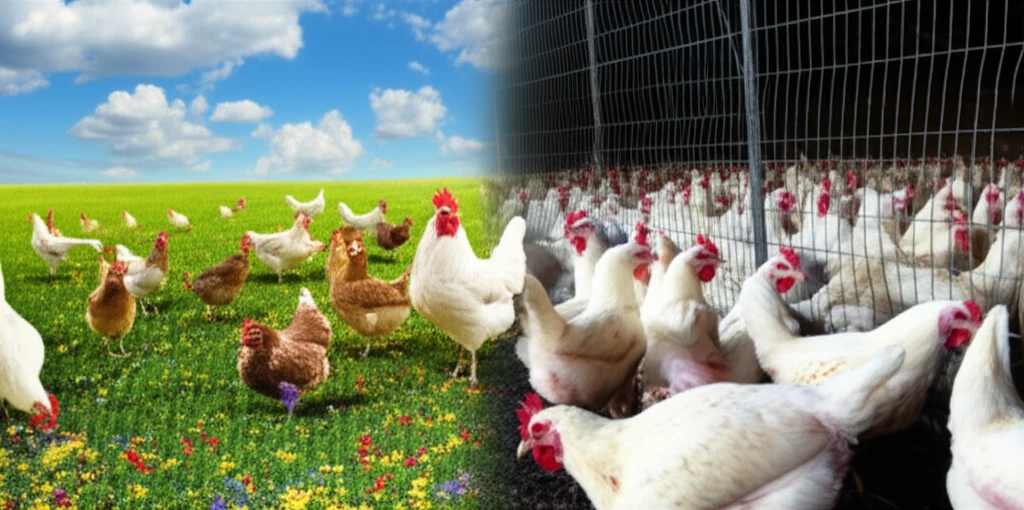
Happy Chickens, Happy Plate? Unveiling the Truth About Free-Range Poultry
"Dive into a groundbreaking study assessing the welfare of free-range chickens and discover how ethical farming impacts your food choices."
In a world increasingly conscious of ethical food choices, the term 'free-range' conjures images of chickens roaming idyllic pastures, a stark contrast to the crowded conditions often associated with industrial farming. This perception has fueled a surge in demand for alternatively raised poultry, with consumers seeking not only healthier but also more humanely produced options. But how well do these free-range systems truly deliver on their promise of improved animal welfare?
While the market for organic and alternatively raised products continues to expand, genuine scientific insights into the welfare of these animals remain limited. It's easy to assume that free-range automatically equates to a better life for chickens, but without rigorous evaluation, we risk perpetuating misconceptions and potentially overlooking critical welfare concerns.
This article explores a detailed study that uses the Welfare Quality® protocol, a standardized assessment tool, to evaluate the well-being of free-range broiler chickens on farms in Paraná, Brazil. By examining various indicators, from physical health to emotional state, we aim to provide a clearer understanding of the realities of free-range poultry farming and its impact on animal welfare.
Decoding the Free-Range Chicken Life: What the Study Reveals

The study meticulously assessed ten free-range farms, focusing on various aspects of broiler welfare. Data collected included scores for lameness, hock burn, plumage cleanliness, and emotional states, along with prevalence percentages for mortality, culling, and diseases. These metrics were carefully analyzed to paint a comprehensive picture of the chickens' living conditions.
- High Scores: Low lameness (median score of 81), excellent plumage cleanliness (median score of 100), minimal panting or huddling on the farm.
- Areas for Improvement: Prevalence of pododermatitis, litter quality, dust levels, and stocking density in some farms.
- Processing Concerns: Issues identified during processing included pre-stun shock and inefficient stunning.
Making Informed Choices: What Does This Mean for Consumers?
This study serves as a reminder that labels like 'free-range' are not a guarantee of perfect animal welfare. As consumers, we have the power to drive positive change by demanding greater transparency and accountability from the poultry industry. By supporting farms committed to implementing best practices, we can contribute to a more ethical and sustainable food system. Further research and ongoing monitoring are essential to continuously improve the lives of free-range chickens and ensure that their well-being remains a top priority.
